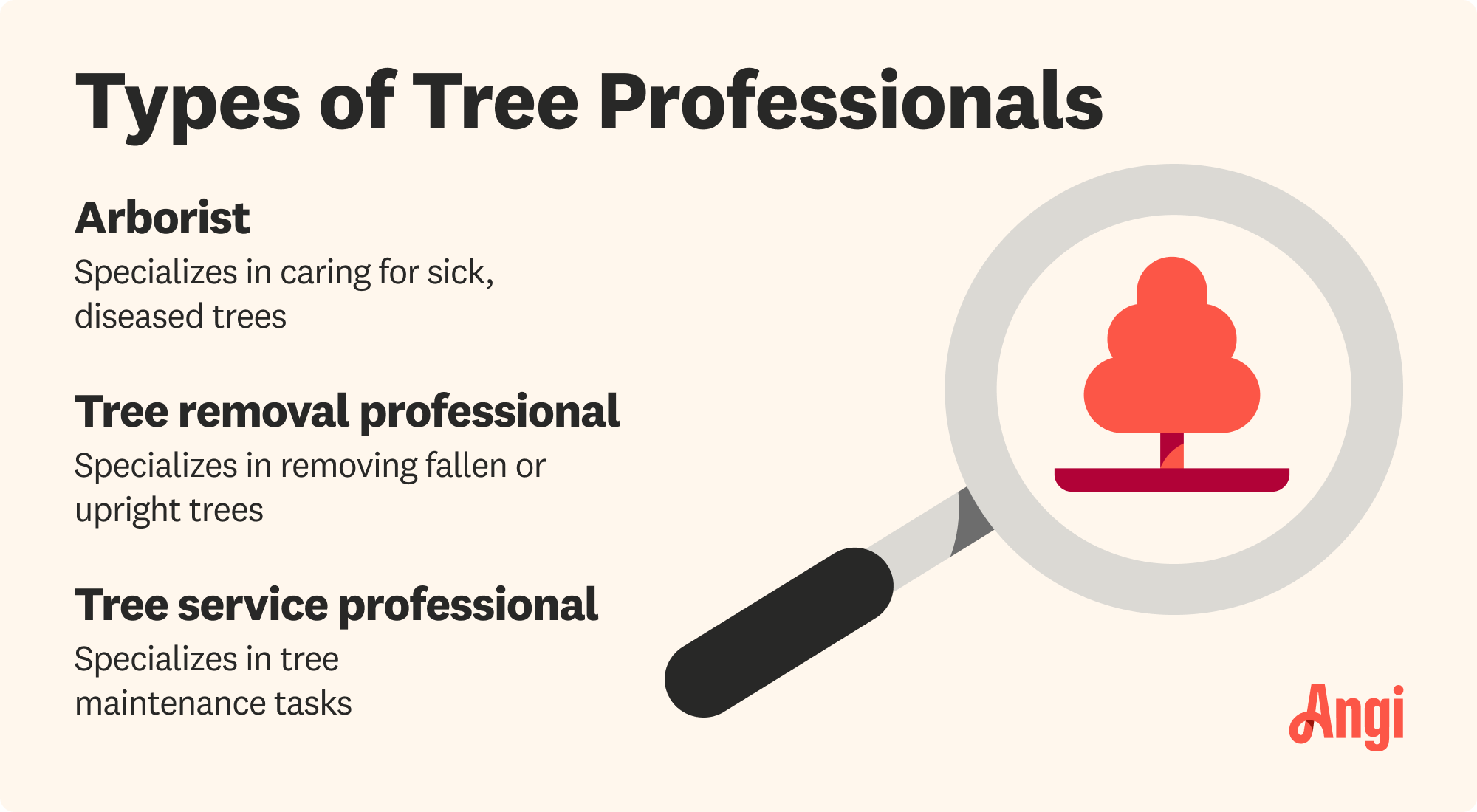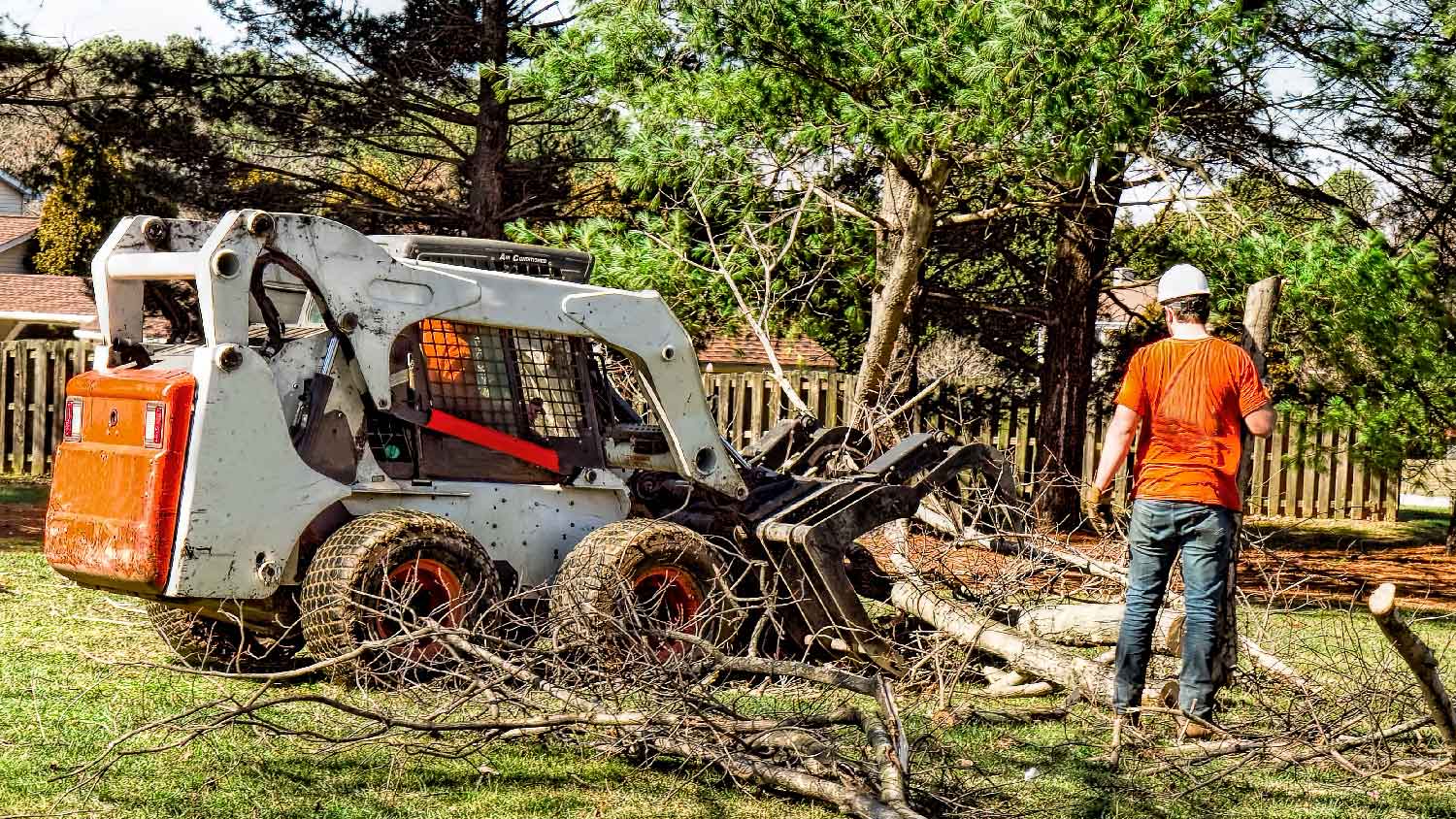
Even the healthiest trees need a trim from time to time, but it's best left to the pros. Here's what you can expect and how to budget for tree trimming costs.
Here’s who to call for help removing a fallen tree


If a tree falls in your yard during a storm or because of other damage, most people aren’t able to assess the situation or remove the tree on their own. So, who should you call when a tree falls in your yard? Let’s dig into what type of professional can help you safely remove the tree.

When you’re in an emergency tree situation, it can be difficult to know what to do. Working with a tree removal service in your area helps alleviate some of this anxiety, as many can make quick work of fallen limbs or entire trees.
There are many reasons to consider working with a tree removal professional, including:
They have the necessary expertise: Tree removal pros are trained with specialized knowledge in tree care and removal. Hiring this type of team ensures that the tree removal is carried out carefully and quickly.
They have damage assessment skills: Tree removal specialists have the skills to assess the tree's condition and determine the best course of action to avoid damage to nearby structures, landscapes, or other people.
They’re well-versed in safety: Tree removal isn’t easy, especially for large or damaged trees. Tree removal pros are equipped with the proper tools and safety gear to ensure the removal process is safe for both the property and the workers involved.
They have the proper equipment: These pros have access to specialized equipment needed for efficient and safe tree removal, including chainsaws, rigging equipment, and cranes for handling large or difficult-to-reach trees.
They have the proper insurance: Professional tree removal teams are typically insured, providing protection in case of accidents or damage during tree removal. This can offer peace of mind to property owners.
They know local regulations: These pros are familiar with local regulations and potential permits required for tree removal. Hiring a professional ensures that the process adheres to local laws and guidelines.
We don’t recommend DIYing tree removal unless you have plenty of prior experience as a tree removal pro. While the cost of tree removal can range from $200 to $2,000, depending on the tree’s size and condition, fallen trees are extremely dangerous, and cutting them wrong could lead to injury.
Tree removal specialists have extensive training in the tree removal process and are often licensed to perform their services. The equipment they use can be hazardous and many arborists take safety courses that teach them proper chainsaw and wood chipper use.
While searching for the right tree removal professional to help you get a fallen tree off your property, you may consider hiring an arborist. However, an arborist is not likely the most qualified or appropriate professional to hire to remove a fall tree.
Arborists are like tree doctors, specializing in caring for and diagnosing diseased trees. This type of tree professional can identify signs of diseases or pests that may have led to the tree falling. Understanding the underlying issues can help prevent future problems with other trees on your property, but it won’t help you solve the immediate problem of removing the tree from your yard.

Tree removal pros, especially those in states with frequent bad weather, understand the ins and outs of moving fallen trees. They’re likely spending many days during the winter or hurricane seasons removing fallen trees. The tree removal process involves careful planning, utilizing specialized equipment, and implementing safety protocols.
Here's an overview of the typical steps taken when tasked with removing fallen trees:
Damage assessment: The first step is a thorough assessment of the fallen tree and its surroundings. Tree removal pros evaluate the extent of the damage, the position of the tree, and any potential hazards in the way of removal.
Set up safety measures: Safety is paramount in fallen tree removal. Tree removal pros take precautions to secure the area, especially if the fallen tree is entangled in power lines or has damaged structures. This may involve isolating the area, redirecting foot or vehicular traffic, and contacting electrical companies on your behalf.
Prepare the equipment: This can include setting up chainsaws, winches, ropes, and even using cranes for larger trees. The choice of equipment depends on the size and location of the fallen tree.
Limbing: Tree removal pros often begin by removing branches from the fallen tree in a strategic manner. This process, known as limbing, helps reduce the tree’s weight and creates a safer working environment. Limbs are carefully lowered to the ground or cut off on the ground to make getting to the trunk easier.
Sectional cutting: For large fallen trees, tree removal pros cut the tree into manageable sections that can be safely lowered to the ground or disposed of if the tree is already on the ground.
Ground crew coordination: There’s often more than one arborist or worker on the ground, especially if the tree that fell was large. Ground crew members assist in guiding branches and sections to the ground, clearing debris, and ensuring the safety of the arborists involved.
Tree removal: Once the tree is cut into manageable pieces, the tree removal pros remove the debris. This involves feeding the branches into a wood chipper or loading pieces into a truck to take offsite.
Stump removal (if necessary): Depending on the preferences of the property owner, tree removal pros may offer stump removal services as part of the fallen tree removal process. Stump grinding equipment is used to reduce the stump to wood chips, leaving the area ready for replanting or other landscaping.
Site cleanup: Once the fallen tree and its components have been safely removed, tree removal pros clean up the site. This includes removing debris, wood chips, and any remaining branches, leaving the area in a safe condition.
If a tree has fallen, you will need to bundle yard cleanup or tree removal services. Tree debris removal services, for example, cost between $75 and $500. But the pros may charge a lower price since the labor is much easier compared to scaling a standing tree.
However, the real danger is if the tree falls on your roof or on public property. That’s going to take repairs and specialized removal to avoid more damage. If the tree damages electronics, water mains, or power lines, emergency services will double the cost.
Once the tree is gone, you should also plan for stump removal. You can bundle it with tree removal services for an extra $100 to $200, depending on the size of stump and type of wood.
Small fallen trees that haven’t caused significant damage are often DIY projects, especially with a chainsaw and previous experience cutting trees. If a fallen tree is beyond 6 inches in diameter, hire a tree removal or maintenance pro to take care of the job.
If a fallen tree has damaged part of your property, especially your house, we suggest hiring an expert to conduct an inspection and provide an estimate of the damage. You’ll want to know exactly what was damaged and what repairs are required.
From average costs to expert advice, get all the answers you need to get your job done.

Even the healthiest trees need a trim from time to time, but it's best left to the pros. Here's what you can expect and how to budget for tree trimming costs.

The cost of tree stump removal depends on size, removal method, location, and more. Our guide will show you how much stump removal costs.

It’s important to remove troublesome stumps: Here’s everything you can expect from stump grinding costs for your next landscaping project.

Clearing trees from your yard will require professional help to complete the job safely. Find out how to clear trees from land.

What is an arborist and do they cut down trees? Learn what an arborist is, the services they offer, and when to hire one.

To remove a tree, you’ll need tools like a chain saw, wedge, wood chipper, and more. Keep reading to discover the top tree cutting tools for your next project.